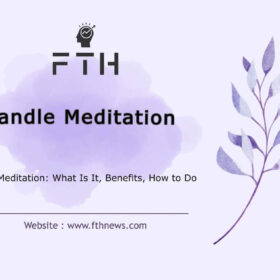
Situational anxiety is a common experience that many of us encounter when faced with new, unfamiliar, or stressful situations. From job interviews to public speaking engagements, these moments can trigger feelings of tension and apprehension. In this guide, we’ll delve into the nuances of situational anxiety, explore its symptoms and causes, and provide practical strategies for managing and overcoming it.
Understanding Situational Anxiety:
Situational anxiety, also referred to as state anxiety, emerges in response to specific circumstances or events that challenge our sense of comfort and familiarity. It’s a natural reaction to situations that push us out of our “comfort zone,” where we may feel secure and at ease. Whether it’s stepping into a new environment, facing a daunting task, or confronting an unfamiliar social situation, situational anxiety can manifest in various forms. While mild situational anxiety is a natural and adaptive response to novel experiences, severe or persistent anxiety can disrupt daily functioning and diminish overall well-being.
In essence, situational anxiety represents our body’s innate alarm system, signaling the perceived threat of unfamiliar or potentially stressful situations. This heightened state of arousal primes us to respond to perceived dangers, mobilizing physical and psychological resources in preparation for action. While this response can be beneficial in certain situations, such as alerting us to potential risks, it can also become overwhelming when disproportionate to the perceived threat.
It’s important to recognize that situational anxiety exists on a spectrum, ranging from mild discomfort to debilitating distress. For some individuals, situational anxiety may be fleeting and manageable, dissipating once the stressor has passed. However, for others, it may persistently linger, interfering with daily activities and hindering personal growth.
Ultimately, reflects our innate vulnerability to uncertainty and change. By understanding its underlying mechanisms and recognizing its potential impact, we can develop strategies to effectively manage and mitigate its effects, empowering us to navigate life’s challenges with resilience and confidence.
Symptoms of Situational Anxiety:
- Increased heart rate
- Sweating
- Muscle tension
- Racing thoughts
- Difficulty concentrating
- Nausea or stomach discomfort
The symptoms of situational anxiety can manifest both physically and psychologically, often presenting a complex interplay between mind and body. Common physical symptoms include a rapid heartbeat, perspiration, muscle tension, and digestive disturbances. These physiological responses reflect the body’s heightened state of arousal in anticipation of perceived threats, preparing for fight or flight.
Psychologically, individuals experiencing situational anxiety may encounter a range of distressing symptoms. Excessive worry, characterized by intrusive thoughts and catastrophic thinking, can consume one’s mental landscape, leading to a sense of impending doom. Irritability and restlessness may surface as the mind grapples with feelings of discomfort and unease. Additionally, disrupted sleep patterns, such as difficulty falling or staying asleep, can exacerbate daytime fatigue and impair cognitive functioning.
Recognizing these symptoms is the first crucial step toward effectively managing situational anxiety. By acknowledging the signs of distress, individuals can take proactive measures to address their emotional and physiological responses, fostering a sense of empowerment and control amidst uncertainty. Moreover, understanding the interconnected nature of these symptoms underscores the importance of adopting holistic approaches to anxiety management, encompassing both physical and psychological well-being. Through self-awareness and targeted interventions, individuals can cultivate resilience and navigate challenging situations with greater ease and confidence.
Examples of Situational Anxiety:
Situational anxiety can manifest in various scenarios, encompassing a wide array of everyday experiences that push individuals beyond their comfort zones. Common examples include:
Public Speaking Engagements:
Speaking in front of a crowd, whether it’s delivering a presentation at work, giving a speech at a special event, or participating in a public forum, can trigger intense feelings of nervousness and apprehension. The spotlight effect, coupled with the fear of judgment or scrutiny, can amplify situational anxiety for many individuals, regardless of their level of expertise or experience.
Meeting New People:
Interacting with unfamiliar individuals, whether in social gatherings, networking events, or professional settings, can evoke feelings of social unease and self-consciousness. The pressure to make a positive impression and navigate social dynamics can exacerbate situational anxiety, particularly for those who struggle with social confidence or social anxiety disorder.
Traveling to Unfamiliar Places:
Venturing into new environments, whether for leisure or business purposes, can provoke feelings of uncertainty and discomfort. Navigating unfamiliar surroundings, cultural differences, and logistical challenges can heighten situational anxiety, even for seasoned travelers. The anticipation of the unknown, coupled with the disruption of routine, can contribute to feelings of vulnerability and stress.
Job Interviews:
The prospect of interviewing for a new job or career opportunity can evoke a potent mix of emotions, ranging from excitement to trepidation. The stakes feel high as individuals strive to make a favorable impression, showcase their qualifications, and navigate challenging questions. The fear of rejection or failure can intensify situational anxiety, undermining confidence and clarity of thought during the interview process.
These situations often evoke feelings of nervousness and apprehension, even in individuals who don’t typically experience anxiety in other areas of their lives. By recognizing these common triggers of situational anxiety, individuals can proactively implement coping strategies and resilience-building techniques to navigate these challenges with greater ease and confidence. Through exposure, practice, and self-awareness, individuals can gradually desensitize themselves to anxiety-provoking situations and cultivate a sense of mastery and control.
Causes of Situational Anxiety:
The origins of situational anxiety are multifaceted and can vary significantly from person to person. Several factors may contribute to its development, including:
Encountering New Situations:
Novelty and unpredictability can trigger situational anxiety, as individuals confront unfamiliar circumstances that challenge their established routines and comfort zones. The fear of the unknown, coupled with uncertainty about how to navigate new experiences, can provoke feelings of apprehension and distress.
Negative Past Experiences:
Traumatic or distressing events from the past can leave a lasting imprint on the psyche, predisposing individuals to heightened anxiety in similar situations. Negative associations and memories may resurface, triggering a heightened state of arousal and vigilance. For example, a previous public speaking mishap or social embarrassment may amplify anxiety in future similar scenarios.
Predisposition to Anxiety Disorders:
Individuals with a predisposition to anxiety disorders, such as generalized anxiety disorder (GAD) or social anxiety disorder (SAD), may be more susceptible to situational anxiety. Biological and genetic factors, combined with environmental influences, can contribute to an individual’s propensity for experiencing heightened levels of anxiety in response to stressors.
Cognitive and Behavioral Patterns:
Maladaptive cognitive and behavioral patterns, such as perfectionism, catastrophic thinking, and avoidance behaviors, can perpetuate situational anxiety. Negative self-talk and distorted beliefs about one’s abilities or the outcomes of situations can exacerbate feelings of apprehension and self-doubt, fueling a cycle of anxiety and avoidance.
Understanding the underlying triggers of situational anxiety is essential for implementing targeted interventions and developing effective coping strategies. By identifying the root causes of anxiety, individuals can gain insight into their unique stressors and develop personalized approaches to managing and mitigating their symptoms. Through therapy, mindfulness practices, and resilience-building techniques, individuals can cultivate greater self-awareness and resilience, empowering them to navigate life’s challenges with confidence and ease.
Treatment Strategies for Situational Anxiety:
Fortunately, situational anxiety can be effectively managed through a comprehensive approach that encompasses both self-help strategies and professional interventions. Here are some key treatment strategies:
Exposure Therapy:
Exposure therapy is a therapeutic technique commonly used to desensitize individuals to anxiety-provoking situations. By gradually exposing oneself to feared situations or stimuli in a controlled and systematic manner, individuals can learn to tolerate and eventually overcome their anxiety responses. This approach helps to retrain the brain’s response to perceived threats, reducing the intensity of anxiety over time.
Cognitive-Behavioral Therapy (CBT):
Cognitive-behavioral therapy (CBT) is a widely used therapeutic approach for treating anxiety disorders, including situational anxiety. CBT helps individuals identify and challenge maladaptive thought patterns and behaviors that contribute to their anxiety. Through cognitive restructuring and behavioral experiments, individuals learn to develop more adaptive coping strategies and problem-solving skills.
Relaxation Techniques:
Relaxation techniques, such as deep breathing exercises, progressive muscle relaxation (PMR), and mindfulness meditation, can help alleviate the physical and psychological symptoms of situational anxiety. These techniques promote relaxation and stress reduction by activating the body’s natural relaxation response, leading to a sense of calm and tranquility.
Physical Activity:
Engaging in regular physical activity can be an effective way to manage situational anxiety. Exercise has been shown to reduce levels of stress hormones, such as cortisol, and increase the production of endorphins, which are natural mood lifters. Whether it’s going for a brisk walk, practicing yoga, or participating in team sports, physical activity can provide a healthy outlet for releasing tension and improving overall well-being.
Caffeine Reduction:
Caffeine consumption can exacerbate symptoms of anxiety by increasing heart rate, stimulating the nervous system, and disrupting sleep patterns. Individuals prone to situational anxiety may benefit from reducing their intake of caffeinated beverages, such as coffee, tea, and energy drinks. Choosing decaffeinated options or alternative beverages can help minimize the physiological effects of caffeine on anxiety.
Seeking Support:
Seeking support from mental health professionals, such as therapists or counselors, can provide valuable guidance and assistance in navigating situational anxiety. Therapy offers a safe and supportive environment for exploring underlying triggers and developing coping strategies tailored to individual needs. Additionally, support groups and peer networks can offer validation, encouragement, and practical advice for managing anxiety in real-world situations.
By incorporating these treatment strategies into a comprehensive anxiety management plan, individuals can gain greater control over their situational anxiety and enhance their ability to thrive in challenging circumstances. With persistence, patience, and support, it’s possible to overcome situational anxiety and cultivate a greater sense of resilience and well-being.
Strategies for Managing Situational Anxiety:
Deep Breathing Exercises:
Deep breathing exercises can help calm the body’s stress response and promote relaxation. Try taking slow, deep breaths in through your nose, holding for a few seconds, and then exhaling slowly through your mouth. Repeat this process several times until you feel more centered.
Visualization Techniques:
Visualization involves imagining yourself successfully navigating the situation that’s causing anxiety. Close your eyes and visualize yourself feeling calm, confident, and in control. Picture the scenario unfolding smoothly and visualize yourself handling any challenges with ease.
Practice Mindfulness:
Mindfulness involves paying attention to the present moment without judgment. When you notice yourself feeling anxious, take a moment to focus on your surroundings and the sensations in your body. Grounding exercises, such as focusing on the feeling of your feet on the ground or the sensation of your breath, can help bring your attention back to the present moment.
Positive Self-Talk:
Monitor your internal dialogue and challenge negative thoughts that contribute to anxiety. Instead of dwelling on what could go wrong, remind yourself of past successes and focus on your strengths and abilities. Repeat affirmations or mantras that instill confidence and optimism.
Differentiating Situational Anxiety from Generalized Anxiety Disorder (GAD):
It’s important to distinguish between situational anxiety, which arises in response to specific situations, and generalized anxiety disorder (GAD), which involves persistent and excessive worry about various aspects of life. While situational anxiety is typically short-lived and tied to specific events, GAD encompasses broader and more pervasive anxiety symptoms.
Situational anxiety is characterized by its context-specific nature, often triggered by particular events or circumstances such as public speaking engagements, job interviews, or social gatherings. Individuals with this anxiety may experience intense feelings of nervousness, apprehension, or distress leading up to and during these events. However, once the triggering situation has passed, their anxiety typically subsides, and they are able to resume normal functioning.
In contrast, generalized anxiety disorder (GAD) is characterized by chronic and excessive worry about a wide range of everyday concerns, including work, health, relationships, and finances. Individuals with GAD may experience persistent anxiety and difficulty controlling their worries, which can significantly interfere with daily functioning and quality of life. Unlike situational anxiety, which is tied to specific triggers, the anxiety experienced in GAD is more pervasive and may not be directly linked to any particular event or situation.
Moreover, individuals with GAD often exhibit physical symptoms such as muscle tension, fatigue, irritability, and difficulty concentrating, which may not be as prominent in situational anxiety. The key distinction lies in the duration, severity, and pervasiveness of symptoms, with GAD typically requiring professional intervention and ongoing management.
What is Situational Anxiety ICD 10?
In the International Classification of Diseases, 10th Revision (ICD-10), situational anxiety does not have a specific code or classification. Instead, it falls under the broader category of anxiety disorders. The ICD-10 includes several codes for different types of anxiety disorders, such as generalized anxiety disorder (F41.1), panic disorder (F41.0), social anxiety disorder (F40.1), and specific phobias (F40.2). Situational anxiety would typically be diagnosed and coded based on the specific symptoms and criteria outlined for these anxiety disorders within the ICD-10.
Is Situational Anxiety a Mental Illness?
Situational anxiety itself is not classified as a mental illness in the same way that specific anxiety disorders, such as generalized anxiety disorder (GAD) or social anxiety disorder, are. Instead, this anxiety is a normal human response to stressors or challenging situations and is considered a natural part of life.
However, can become problematic when it is severe, persistent, or significantly interferes with daily functioning. In some cases, situational anxiety may be a symptom of an underlying anxiety disorder or other mental health condition. For example, individuals with social anxiety disorder may experience intense anxiety in specific social situations, while those with panic disorder may experience sudden and severe anxiety attacks triggered by certain situations.
It’s essential to distinguish between normal levels of situational anxiety, which are temporary and manageable, and clinically significant anxiety disorders, which may require professional intervention and treatment. If situational anxiety is causing significant distress or impairment in your life, it may be helpful to consult with a mental health professional for further evaluation and support.
How Long Does Situational Anxiety Last?
The duration of situational anxiety can vary widely depending on individual factors such as the specific situation, coping mechanisms, and overall mental health. In many cases, this anxiety is temporary and may subside once the triggering situation has passed or once the individual has become accustomed to it.
For some people, situational anxiety may last only a few minutes or hours, while for others, it may persist for days or weeks leading up to the event or situation causing anxiety. In general, situational anxiety tends to be short-lived and typically resolves on its own once the stressor is no longer present.
However, if situational anxiety is severe, persistent, or significantly interferes with daily functioning, it may be indicative of an underlying anxiety disorder or other mental health condition. In such cases, professional intervention and treatment may be necessary to address the underlying issues contributing to the anxiety and help manage symptoms effectively.
If you’re experiencing situational anxiety that is causing significant distress or impairment, it’s important to seek support from a qualified mental health professional who can provide personalized guidance and treatment options tailored to your needs.
Impact of Situational Anxiety on Daily Life
Situational anxiety can have a profound impact on various aspects of daily life, affecting individuals both emotionally and physically. Here are some common ways in which this anxiety may impact daily functioning:
Work Performance:
Situational anxiety can impair concentration, focus, and decision-making abilities, making it challenging to perform effectively at work. Individuals may experience difficulty meeting deadlines, participating in meetings, or interacting with colleagues, leading to increased stress and reduced productivity.
Academic Performance:
For students, situational anxiety can interfere with academic performance by affecting their ability to study, take exams, and participate in classroom activities. Fear of failure or embarrassment may lead to avoidance behaviors, such as skipping classes or procrastinating on assignments, further exacerbating academic difficulties.
Social Relationships:
Situational anxiety can strain social relationships by causing individuals to avoid social interactions or withdraw from social activities altogether. Fear of judgment or rejection may prevent individuals from attending social gatherings, making new friends, or engaging in meaningful conversations, leading to feelings of isolation and loneliness.
Physical Health:
Chronic stress and anxiety can take a toll on physical health, contributing to symptoms such as headaches, muscle tension, fatigue, and digestive problems. Prolonged activation of the body’s stress response system can weaken the immune system and increase susceptibility to illness and disease.
Emotional Well-being:
Situational anxiety can trigger a range of emotional responses, including feelings of fear, apprehension, irritability, and frustration. Individuals may experience mood swings, panic attacks, or intense emotional distress in response to triggering situations, further impacting their overall well-being and quality of life.
Daily Activities:
Simple tasks and activities that others may take for granted can become daunting challenges for individuals with situational anxiety. Activities such as driving, shopping, or attending appointments may evoke feelings of fear or discomfort, leading to avoidance behaviors and difficulty engaging in routine tasks.
Sleep Patterns:
Anxiety can disrupt sleep patterns, making it difficult to fall asleep, stay asleep, or achieve restful sleep. Individuals may experience racing thoughts, nightmares, or frequent awakenings during the night, contributing to fatigue and daytime drowsiness.
Overall, the impact of situational anxiety on daily life can be significant, affecting various aspects of functioning and well-being. It’s essential for individuals experiencing this anxiety to seek support and treatment to effectively manage their symptoms and improve their quality of life. Through therapy, medication, and self-help strategies, individuals can learn to cope with anxiety more effectively and regain control over their lives.
Can Situational Anxiety Be Helpful?
Certainly! While situational anxiety is often viewed in a negative light due to the discomfort and distress it can cause, it’s important to recognize that it can also serve a purpose and be helpful in certain situations. Here’s some information on how this anxiety can sometimes be beneficial:
Heightened Awareness:
Situational anxiety can sharpen your focus and increase your awareness of potential threats or challenges in your environment. This heightened state of alertness can help you anticipate and respond effectively to stressful situations, improving your overall safety and well-being.
Motivation to Prepare:
Feeling anxious about an upcoming event or task can motivate you to prepare more thoroughly and take necessary precautions. For example, if you’re anxious about giving a presentation at work, you might spend extra time practicing and refining your delivery to ensure success.
Adaptive Response:
In some cases, situational anxiety triggers a physiological response known as the “fight or flight” response, which prepares your body to either confront or flee from a perceived threat. This adaptive response can provide you with the energy and focus needed to overcome obstacles and achieve your goals.
Learning and Growth:
Coping with situational anxiety can foster resilience and personal growth by challenging you to step outside your comfort zone and confront your fears. Overcoming anxiety-provoking situations can build confidence, self-efficacy, and a sense of accomplishment, ultimately expanding your comfort zone and increasing your resilience to future challenges.
Perspective Shift:
Experiencing situational anxiety can prompt you to reevaluate your priorities, goals, and values, leading to greater self-awareness and personal growth. It may encourage you to reflect on what truly matters to you and inspire positive changes in your life, such as pursuing meaningful relationships or career opportunities.
Signal for Change:
Situational anxiety can serve as a signal that something in your life may need attention or adjustment. It may indicate that you’re facing a situation that is incongruent with your values, goals, or desires, prompting you to reassess your choices and make necessary changes to align with your authentic self.
Overall, while this anxiety is often uncomfortable and challenging to cope with, it can also have positive aspects and serve as a catalyst for growth, learning, and personal development. By reframing your perspective and embracing the potential benefits of this anxiety, you can harness its energy and use it as a tool for self-improvement and empowerment.
Conclusion:
Situational anxiety is a common experience that affects individuals in various aspects of their lives. By understanding its symptoms, causes, and treatment strategies, individuals can develop effective coping mechanisms and overcome the challenges posed by stressful situations. With mindfulness, preparation, and support, it’s possible to navigate situational anxiety with resilience and confidence, empowering individuals to thrive in all aspects of life.
Recognizing the differences between situational anxiety and generalized anxiety disorder (GAD) is essential for accurate diagnosis and appropriate treatment. While situational anxiety may be managed with self-help strategies and brief interventions, GAD often requires professional intervention, such as therapy or medication, to address underlying issues and promote long-term recovery. By seeking support and utilizing available resources, individuals can effectively manage both situational anxiety and GAD, leading to improved well-being and quality of life.














